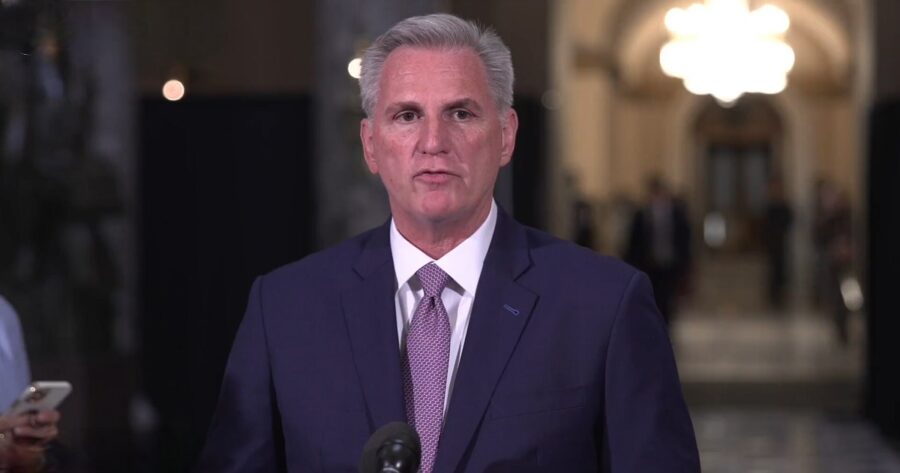In recent news, the United States House of Representatives has increased the debt ceiling to $1.5 trillion dollars, but not without some major concessions and political maneuvering. The Bill was passed with razor-thin margins of 217-215 votes and was loaded with what many are calling “poison pills” that the GOP says would cut spending by $4.5 trillion over ten years. This move has been met with mixed reactions from both parties, with some hailing it as a necessary step in ensuring the country’s financial stability, while others see it as a reckless move that could have far-reaching consequences.
Before delving into the specifics of the House Bill, it’s essential to understand what the debt ceiling is and why it’s necessary. The debt ceiling is the maximum amount of debt the US government can legally incur, currently set at $31 trillion dollars. If the debt ceiling is not raised, the government would be unable to borrow any more money, potentially leading to a default on the country’s debt. This could result in a severe economic downturn, with consequences felt across the globe.
With the debt ceiling set so high, it’s unsurprising that it’s been a contentious issue in Congress for many years. Raising the debt ceiling requires a vote in both the House of Representatives and the Senate, which has become increasingly difficult as political polarization increases. This has led to a series of high-stakes battles, with both parties using the debt ceiling as a bargaining chip to push through their preferred policies.
The House Bill, passed by the Republicans, is one such attempt to push through a range of policies by attaching them to the debt ceiling vote. The bill includes proposals to retrieve unused COVID-19 funds, impose stricter employment requirements for individuals receiving government assistance, prevent the cancellation of student debt of up to $20,000, and terminate many of the tax benefits for renewable energy that were enacted by Biden last year. At the same time, it includes a comprehensive Republican bill that seeks to promote the production of oil, gas, and coal.
The bill’s passage was a closely contested affair, with House Leader McCarthy making major concessions with his party to secure the necessary votes. Senate Majority Leader Chuck Schumer has referred to the passing of the House Bill as a “wasted effort” and has called on the Republicans to come to the table to pass a clean debt ceiling Bill, which is customary of both parties. The Republicans, for their part, are likely to use the debt ceiling as a bargaining chip to push through their preferred policies.
The House Bill is expected to fail in the Senate, which the Democrats control, will put President Biden center stage to negotiate. The proposed actions involve several areas of policy, and if enacted, they would have significant implications for several areas of public policy. The proposals to retrieve unused COVID-19 funds, for instance, would free up billions of dollars that could be used to fund other programs or pay down the debt. Similarly, the proposals to impose stricter employment requirements for individuals receiving government assistance could help reduce the federal government’s overall expenditure.
On the other hand, the proposals to prevent the cancellation of student debt of up to $20,000, and terminate many of the tax benefits for renewable energy that were enacted by Biden last year, have been met with fierce opposition from the Democrats. They argue that these proposals are essential in promoting environmental sustainability and addressing income inequality and that removing them would be a significant setback for the country’s long-term interests.
While some hail it as a necessary step to ensure the country’s financial stability, others see it as a reckless move that could have far-reaching consequences. The bill’s passage also highlights the continued political polarization in Congress, with both parties using the debt









